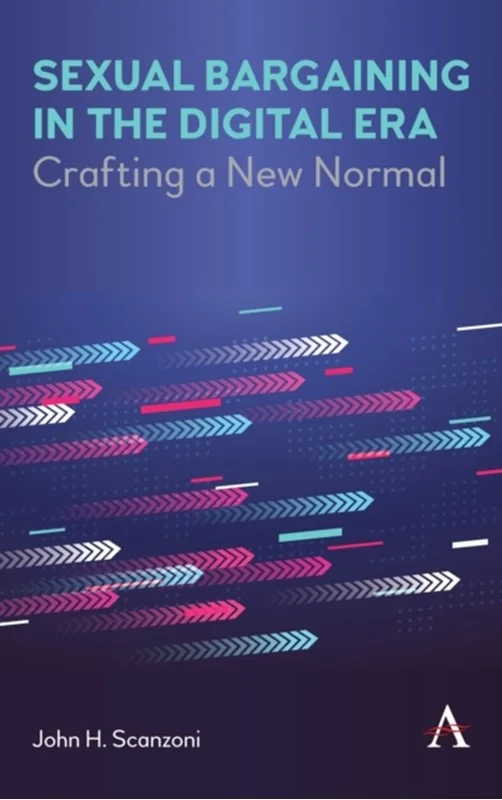Sexual Bargaining in the Digital Era follows the evolution of genders/sexualities and so on away from their Old Normal (ON) pattern, which prevailed during the Agricultural Age and the Industrial Age, and into the New Normal (NN) pattern which is currently surfacing in concert with an emerging Digital Era.
ON was based on the ancient traditional script governing how women, men, children ought to behave within the spheres of genders/marriages/families/relationships/sexualities. Over the centuries, ON eventually modified into the familiar 1950s style (nuclear) patriarchal, cisgender, husband/wife/with children and family. And now that style itself is fading away into NN.
NN is based not on script but on improvisationit is essentially a continual work-in-progress. To make it function the partners engage in ongoing negotiation governed by the principle that everything is negotiable except the principle that everything is negotiable. NN has thus far been pursued most frequently by persons (New Lights) who are educated and relatively advantaged. ON has been pursued mostly by persons (Old Lights) who are less educated and relatively less advantaged. ON is also strongly embraced by persons of a traditional religious bentpersons who tend to be rigid and unbending in their religious views. Currently, they tend to be extremely right-wing evangelicals and extremely right-wing Catholics. Importantly, their political clout far exceeds their relatively modest numbers within the larger population.
In brief, the shift from ON to NN is a move away from the sanctity of a particular structure to the primacy of persons engaged in ongoing processes of inventing (and reinventing) certain arrangements of genders/marriages/families/relationships/sexualities, enabling them to fulfil their needs for primary (intrinsic/emotional) satisfactions such as liking, loving, empathy, companionship, sexual and so forth. Among other things, this shift replaces the preeminence of the historic binary or cisgender approachheterosexual, legal, children and so onin favor of the diversity/variety/multiplicity approach which incorporates under one conceptual umbrella all persons of whatever genders, sexualities and so on. All persons are thus engaged in a common struggle to achieve personal satisfactions as well as contribute to the Greater Good.
The central theme of Sexual Bargaining in the Digital Era is the ongoing (historic and present) struggle between the theocratically oriented Old Lights who insist on using the law to continue to impose the Old Normal (ON) on all other citizensincluding the New Lights. The latter are progressives, feminists and others who advocate the notion that there is a social and economic fit between the New Normal (NN) and the emerging Digital Era. New Lights also argue that NN is exceedingly more beneficial for less advantaged persons (including those of color) than is ON.
The Old Lights argue from a traditional religious standpoint. To help impose their theocratic view of the Family, they have recently joined forces with the extreme right-wing elements of the Republican party. That union of reactionary religion with reactionary politics is particularly detrimental to the well-being of less-advantaged persons.
The book also describes public policies and programs advocated by New Lights which are aimed at benefiting less-advantaged persons in particular (though not exclusively). Included are Ideation Centers. That is the contemporary label replacing the traditional label of school. Traditional schools were linked with the Industrial Age, but now tend to falter when it comes to preparing children/youth (especially less-advantaged) for the Digital Era.
Ideation centers are publicly funded sites whose central objective is to coach students in what some economists describe as ideation skills/capabilitiescritical/creative thinking, negotiation and problem solving. Those are the very skills necessary to do well in the Digital Era and thus it is essential that less-advantaged children/youth have ready access to the centers. Those skills are also required to negotiate primary relationships (PR) effectively. Hence, ideation centers fulfil vital functions for both the public/economic/work world, and also for the personal world of PR.
Furthermore, in order to do well in the Digital Era women must be what the book calls autonomous. Indeed, the notion of growing numbers of women becoming autonomous is pivotal to the whole idea of NN. An autonomous woman is, first of all, in control of, or sovereign over what Marx/Engels called the means of production. Economic production refers to the kinds of educational and occupational experiences which enable her, among other things, to be economically independent (able to support herself and any dependants)apart from a partner if need be.
Alongside production is reproduction. The autonomous woman controls not only the economic sphere of her life but also the sexual/reproductive sphere. The two spheres reinforce one anothercontrol in one sphere enhances control over the other: Women who control their sexual/reproductive sphere are better able to control their economic sphere and vice versa. Needless to say, control over reproduction requires ready access to the most effective methods of contraception and access to safe abortion. For less-advantaged women, the costs of either or both would be borne by the state.
... Vis mere


